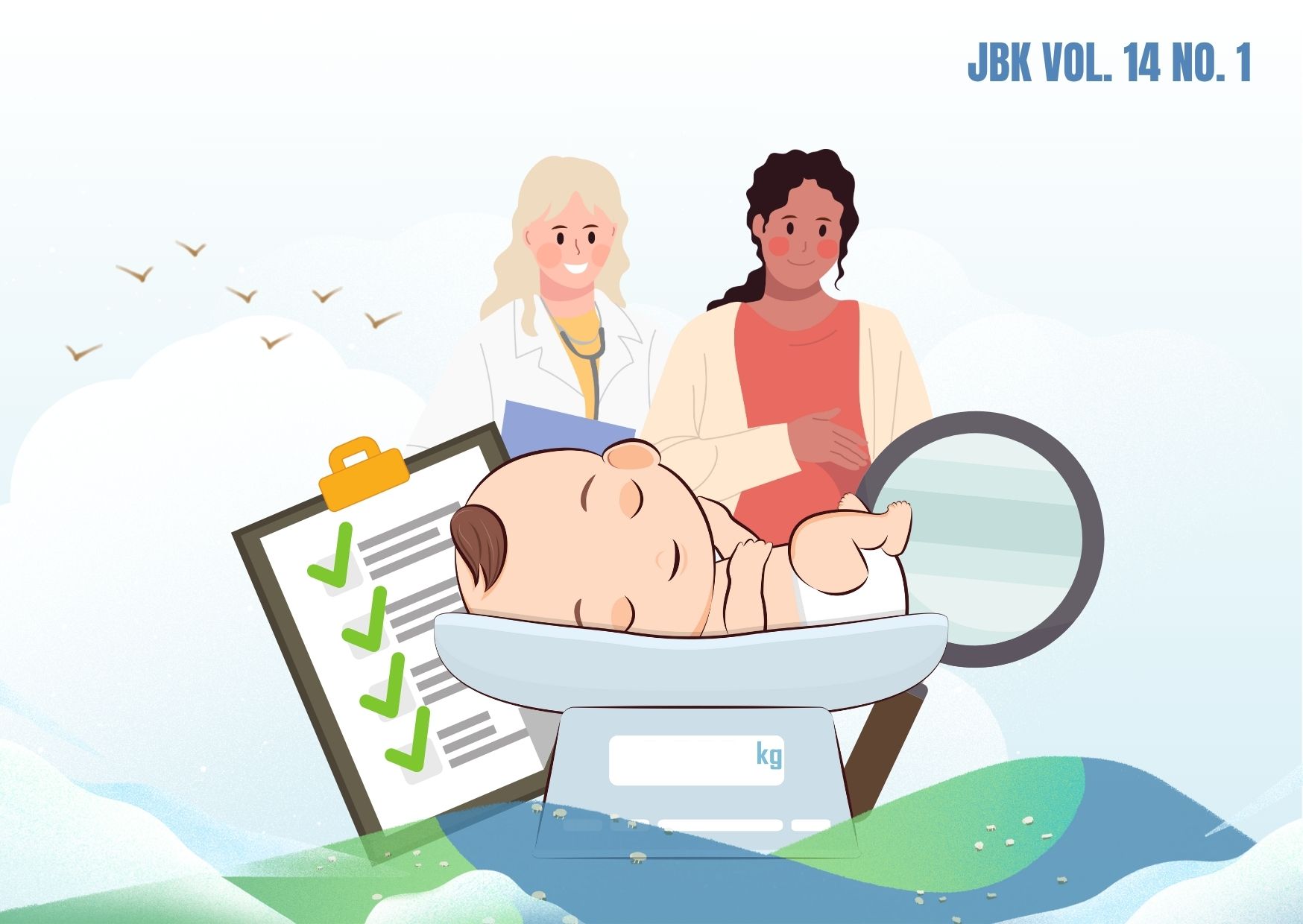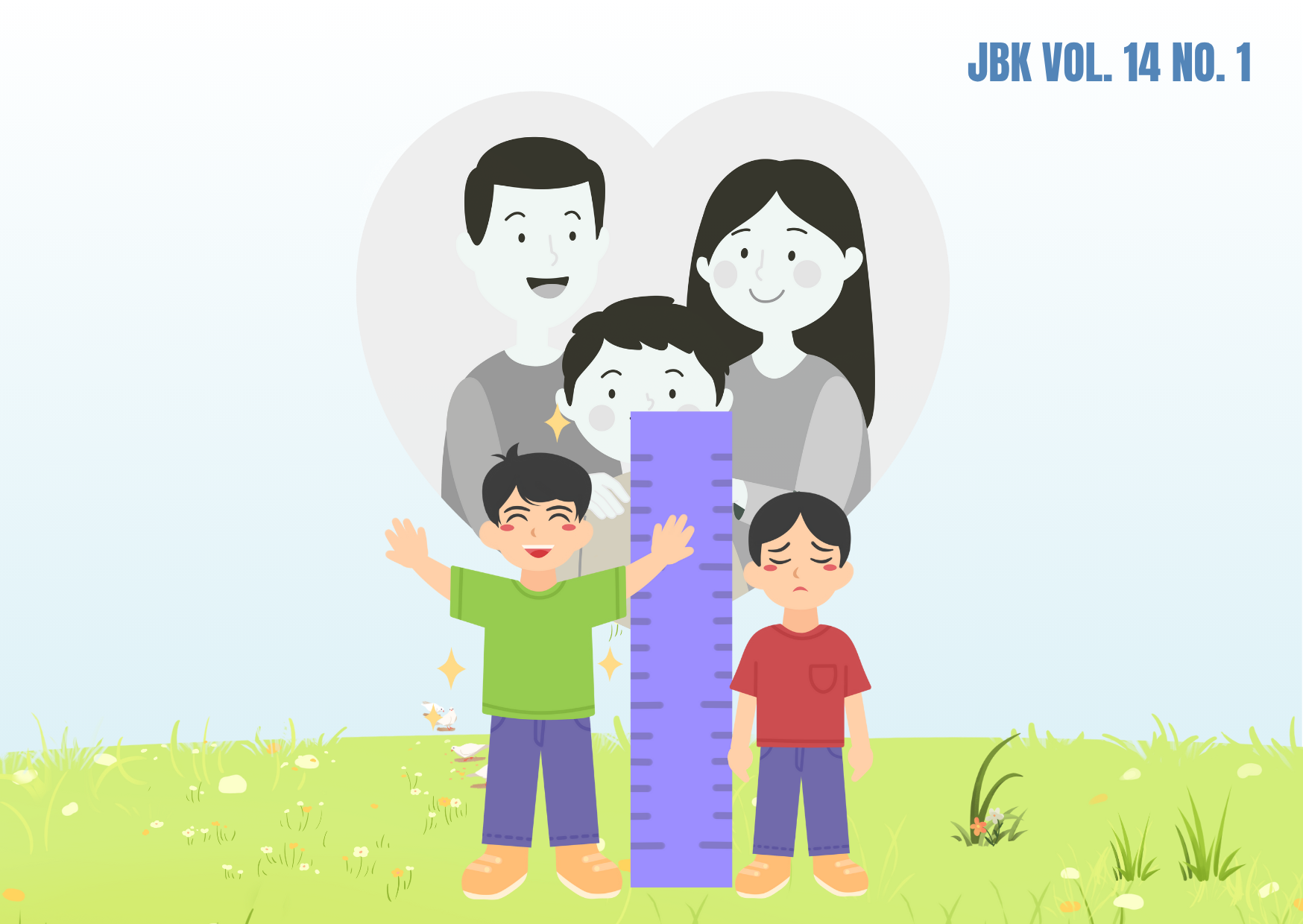RELATIONSHIP BETWEEN CONTRACEPTIVE USE AND OCCUPATIONAL STATUS WITH UNWANTED PREGNACNY RISK AMONG COUPLES OF CHILDBEARING AGE
Downloads
Anggraini, K., Wratsangka, R., Bantas, K. and Fikawati, S., 2018. Faktor-faktor yang Berhubungan dengan Kehamilan Tidak Diinginkan di Indonesia. PROMOTIF: Jurnal Kesehatan Masyarakat, 8(April), pp.27–37.
Azinar, M., 2013. Perilaku Seksual Pranikah Berisiko Terhadap Kehamilan Tidak Diinginkan. Jurnal kesmas, 8 (2), pp. 137–145.
Bearak, J., Popinchalk, A., Alkema, L., and Sedgh, G., 2018. Global, Regional, and Subregional Trends in Unintended Pregnancy and Its Outcomes from 1990 to 2014: Estimates from a Bayesian Hierarchical Model. THE LANCET Global Health, 6(4), pp.e380–e389.
Daerah Istimewa Yogyakarta Indonesian Family Planning Association, 2016. 4 Teori Pendekatan Efektif pendidikan HKSR Terhadap Kaum Muda. [Online]. Available at: https://pkbi-diy.info/4-teori-pendekatan-efektif-pendidikan-hksr-terhadap-kaum-muda/.
Dini, L.I., Riono, P. and Sulistyowati, N., 2016. Pengaruh Status Kehamilan Tidak Diinginkan Terhadap Perilaku Ibu Selama Kehamilan dan Setelah Kelahiran di Indonesia (Analisis Data SDKI 2012). Jurnal Kesehatan Reproduksi, 7(2), pp.119–133.
Farida, 2017. Penggunaan Alat Kontrasepsi Suntik dan Pil Terhadap Peningkatan Berat Badan pada Ibu Pasangan Usia Subur (di Dusun Gender Desa Karanganom Kec. Kauman Kab. Tulungagung). STRADA Jurnal Ilmiah Kesehatan, 6(2), pp.43–47.
Hanifah, L., Asyik, B., Zulkarnain, 2014. Pengaruh, Pendidikan, Pekerjaan, Usia Kawin Pertama, Penggunaan Alat kontrasepsi Terhadap Jumlah Anak. Jurnal Penelitian Geografi, 2(8), pp. 1–9.
Indonesian Ministry of Health, 2013. Situasi Keluarga Berencana di Indonesia. 2nd ed. Jakarta: Indonesian Ministry of Health.
Perwiraningtyas, P. and Prasetiyo, N.A., 2016. Hubungan Jenis Metode Kontrasepsi dengan Kehamilan Tidak Diinginkan (KTD) pada Pasangan Usia Subur (PUS). Jurnal Ners LENTERA, 4(1), pp.15–25.
Prastiwi, R.S., 2017. Determinan Kejadian Kehamilan Tidak Direncanakan (KTD) di Kabupaten Tegal. In: Seminar Nasional IPTEK Terapan. Tegal: Poli Teknik Tegal.pp.15–17.
Ratnaningsih, E., 2018. Analisis Dampak Unmet Need Keluarga Berencana Terhadap Kehamilan Tidak Diinginkan di Rumah Sakit Panti Wilasa Citarum Semarang. Jurnal Kebidanan, 7(2), pp.80–94.
Saptarini, I. and Suparmi, 2016. Determinan Kehamilan Tidak diinginkan di Indonesia (Analisis Data Sekunder Riskesdas 2013). Jurnal Kesehatan Reproduksi, 7(1), pp.15–24.
Sari, D., 2016. Faktor-faktor yang Berhubungan dengan Kehamilan pada Usia Remaja di Puskesmas Ciputat Kota Tanggerang Selatan Tahun 2014. Arsip Kesehatan Masyrakat, 1(1), pp.4–17.
Suherni and Raharjo, B.B., 2018. Demography Characteristic of Married Women and Abortion Behavior in Unwanted Pregnancy. Public Health Perspective Journal, 3(2), pp.131–139.
Supriyatna, Dewi, F.S.T. and Wilopo, S.A., 2018. Intensi Fertilitas Wanita Usia Subur dan Kehamilan Tidak Diinginkan di Indonesia: Analisis Data Performance Monitoring and Accountability 2020. Berita Kedokteran Masyarakat, 34(5), pp.185–193.
Theme-Filha, M.M., Baldisserotto, M.L., Fraga, A.C.S.A., Ayers, S., Gama, S.G.N. da and Leal, M. do C., 2016. Factors Associated with Unintended Pregnancy in Brazil: Cross-Sectional Results from The Birth in Brazil National Survey, 2011/2012. Reproductive Health, 13(118), pp.235–243.
Yusof, M., Samad, A.A., Omar, M. and Ahmad, N.A., 2018. Unplanned Pregnancy and Its Associated Factors. Global Journal of Health Science, 10(8), pp.132–142.
Copyright©2022 Jurnal Biometrika dan Kependudukan (Journal of Biometrics and Population)
This work is licensed under a Creative Commons Attribution-NonCommercial-ShareAlike 4.0 International License.
1. Copyright of all journal manuscripts is held by the Jurnal Biometrika dan Kependudukan.
2. Formal legal provisions to access digital articles of the electronic journals are subject to the provision of the Creative Commons Attribution-ShareAlike license (CC BY-NC-SA), which means that Jurnal Kesehatan Biometrika dan Kependudukan to keep, transfer media/format, manage in the form of databases, maintain, and publish articles.
3. Published manuscripts both printed and electronic are open access for educational, research, and library purposes. Additionally, the editorial board is not responsible for any violations of copyright law.



































